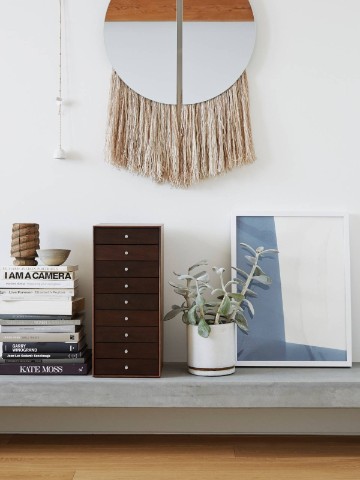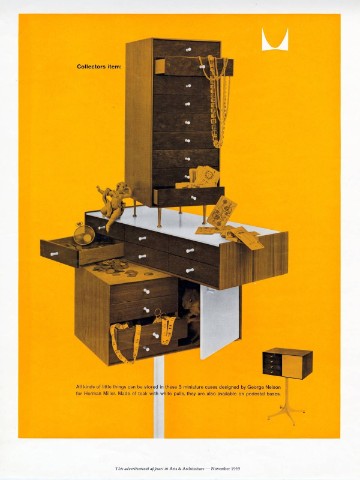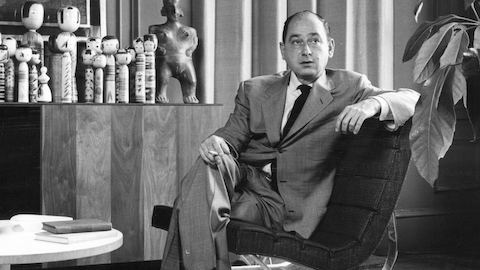“A sense of fitness in the relationship between hand, material, and shape”
Japan had a profound effect on George Nelson. During his first trip to Tokyo in 1951, and during several more that decade, Nelson became fascinated with all things Japanese. He designed these delicately crafted chests soon after returning from that first Tokyo visit.

Japan had a profound effect on George Nelson. During his first trip to Tokyo in 1951, and during several more that decade, Nelson became fascinated with all things Japanese. He designed these delicately crafted chests soon after returning from that first Tokyo visit.
The chests echo tansu, Japanese mobile storage chests that typically contain many small drawers. Nelson said he intended them to demonstrate what he liked most about Japanese design—“a sense of fitness in the relationship between hand, material, and shape.”
Designed to look and feel exquisite, the chests are another application of George Nelson’s exploration of storage furniture, first introduced in 1945 in a Life magazine feature on his modular “Storagewall.” They were originally released in 1952 as part of Nelson’s “Rosewood Group”—a series of customizable cases in rosewood. As the veneer range expanded and design details were standardized, the pieces were again renamed in 1958, this time after the feature that gives them their unique aesthetic quality—the thin edge that frames the doors and drawers.

